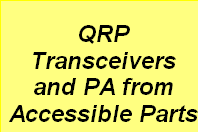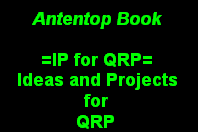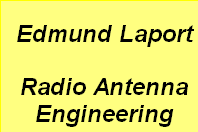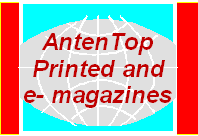

Antentop is FREE e-magazine devoted to Antennas and Amateur Radio an
Special page devoted to
A Multi Band Tube 10 w QSK Transceiver

Custom Search
|
ANTENTOP- 01- 2010, # 012 |
A
Multi Band Tube 10 w QSK Transceiver |
|||||||||||||||||||||||||||||||||||||||||||||||||||||||||||||||||||||||||||||||||||||||||||||||||||||||||||||||||||||||
|
|
||||||||||||||||||||||||||||||||||||||||||||||||||||||||||||||||||||||||||||||||||||||||||||||||||||||||||||||||||||||||
|
Tuning and Adjustment Transceiver made from right parts
should work straight away. You need only to tune (by GDO or RF-
Voltmeter) the plug-in inductors for the needed frequencies. At
self-exciting of the RF-Amplifier at the any band vary the value
of the R4 that is installed at plug- in inductor. C24 can adjust
amplification of the audio amplifier. The audio amplifier works
well only with high- ohmic headphones. The transceiver has no special circuit for frequency
shift at RX/TX mode. The shift occurs automatically because of
a difference in parameters "cold" and "hot"
V5. |
In my case the shift was near
300- Hz at 160 and 80- meters and more the 1000 Hz at 10- meters.
You may install the shift by playing with C7, C14 and C16. *Note from I.G.: At the old times, when the transceiver was made (80- 90s) I had a box
with headphones. There were old headphones (from 1941- to 1980)
from receivers and phone systems. The headphones were made in
different countries- |
|||||||||||||||||||||||||||||||||||||||||||||||||||||||||||||||||||||||||||||||||||||||||||||||||||||||||||||||||||||||
|
Table 2 Data for Inductors
Note 1. Inductors made on Russian resistors MLT-2 (value more the 100- kOhm), winding on all the length.
Figure 2 shows the resistor. Note 2. Inductors made on Russian resistors WS- 2 (value more the 100- kOhm), winding on all the length.
Figure 3 shows the resistor. * First column- numbers of turns, second- length in mm ** Diameter L8- 34- mm L1 (numbers of coil near 30% from L2) is wound above
L2. L4 (numbers of coil near 30% from L5) is wound above L5. |
||||||||||||||||||||||||||||||||||||||||||||||||||||||||||||||||||||||||||||||||||||||||||||||||||||||||||||||||||||||||
|
Page 77 |
||||||||||||||||||||||||||||||||||||||||||||||||||||||||||||||||||||||||||||||||||||||||||||||||||||||||||||||||||||||||
 |
 |
 |
 |
Just for Fun:

Powered byIP2Location.com
Thanks for your time!
Last Updated:
January 22, 2020 22:13




